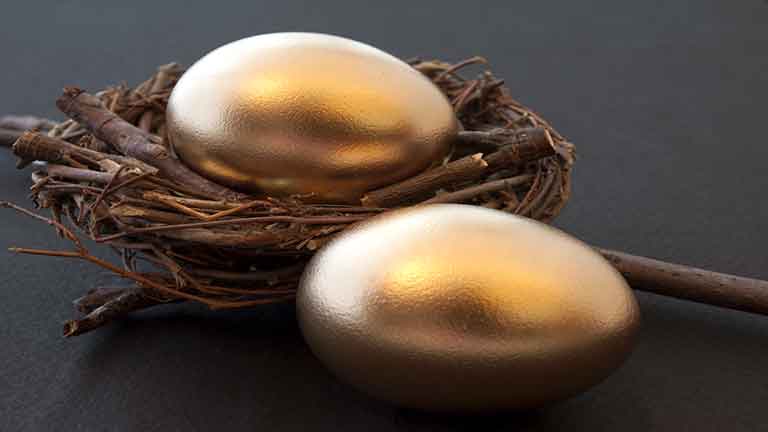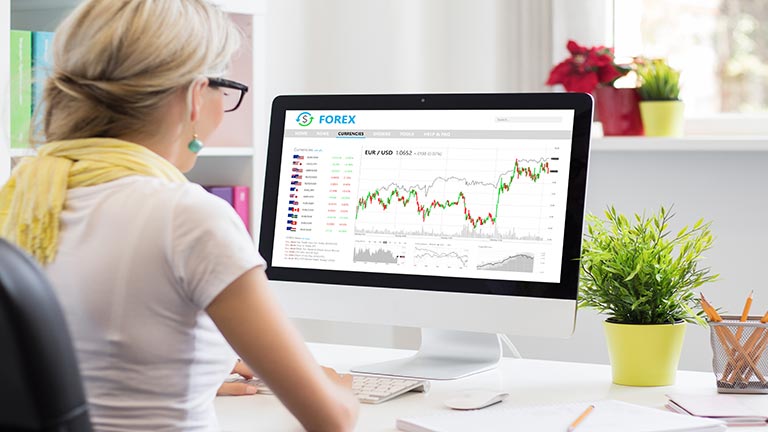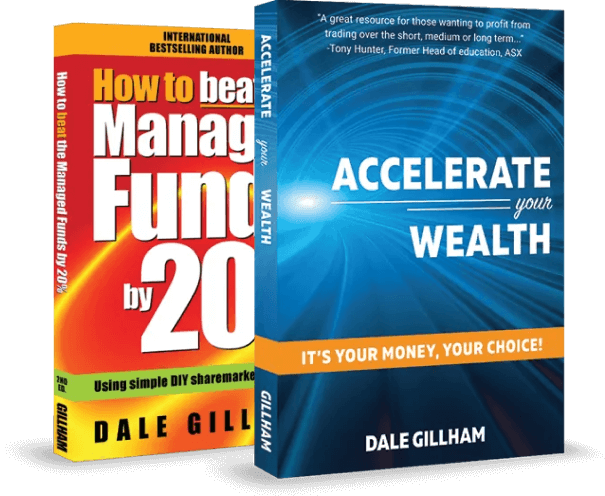How do Dividends Work in Australia?

By Dale Gillham
Dividends are an important part of a well-rounded investment strategy, as they can provide a steady stream of income that can be used to supplement other sources of income. They also enable you to compound your returns by reinvesting your dividends, however, you need to ensure you don't invest in stocks on dividends alone. A good investment must have capital growth, meaning your investments increase in value, and income from dividends.
In this practical guide, we'll investigate how dividends work in Australia including your entitlements, the tax benefits, and how you can maximise your capital and dividend income.
What is a dividend?
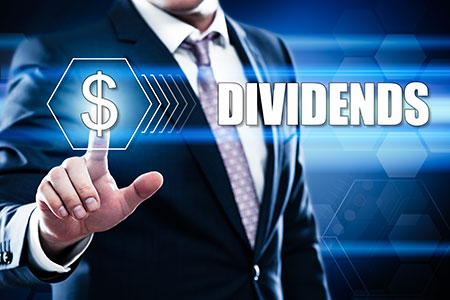
Dividends are a portion of profits paid out by a company to its shareholders. Dividends are usually paid twice a year via an interim dividend and an annual dividend, although some companies may also pay special dividends at other times of the year. The amount of the dividend is usually determined by the board of directors and is typically expressed in cents per share. Dividends are usually paid out in cash, but some companies offer shareholders the option to receive additional shares via a dividend reinvestment plan.
What are the benefits of dividends?
Investing in stocks that pay dividends can provide a more reliable source of income than other investments such as cash or bonds. Dividends can also be more attractive than investing in bonds or cash as they also have the potential to provide capital growth.
In addition, dividends are often more appealing to retirees than rental income from property for two reasons. Firstly, the yield on many stocks is higher than the rental yield on a property and secondly, after considering the costs of maintaining a property, many find the net yield is too low.
Entitlement to dividends
To determine if you are entitled to a cash dividend, it is important to understand that each dividend has a record date and an ex-dividend date associated with it. The record date is the date the company closes its register to determine which shareholders are entitled to receive the current dividend. While the ex-dividend date falls one business day before the company's record date.
To receive a dividend, you must own shares in the company before the ex-dividend date. Dividends are then paid 4 to 8 weeks after the ex-dividend date.
Why does the share price fall when the company goes ex-dividend?
There tends to be an increase in demand for the company's stock before the ex-dividend date as more investors purchase shares to be eligible for the dividend. After the ex-dividend date, however, the share price will fall temporarily as the company has allocated capital to pay the dividend, resulting in a decrease in its value.
Dividend payments
The size of the dividend you receive will depend on the company's dividend policy, which outlines how much and how often they pay out dividends. It's a good idea to review the policy before you purchase any shares to ensure it fits with the goal of your portfolio.

For example, if your goal is to purchase shares in a company that delivers both capital growth and income, purchasing shares in small-cap stocks may not deliver this outcome, as they are unlikely to issue a dividend. You can find out if a company pays dividends by visiting the Australian Stock Exchange or by going to the company's website.
Generally, larger companies, like the top 50 stocks on the Australian market, which have an established track record tend to pay higher dividends than smaller companies. However, dividends are not a guaranteed source of income, as companies can change their policy by reducing the dividends they pay or choosing not to pay one at all. For example, during the COVID-19 pandemic, the Australian Prudential Regulation Authority capped the payout of dividends that banks could make to 50 per cent of a company's profits.
Now let's investigate how you can calculate how much income you will receive on your shareholding.
How is a dividend payment calculated?
The amount of income you will receive is calculated by multiplying the number of shares you own by the amount of the dividend payable per share. For example, if you own 1,000 shares and the company announces a dividend of $0.10 per share, you will receive a payment of $100 (1,000 x 0.1).
How do I calculate the dividend yield?
The dividend yield is simply the income you receive from holding the stock expressed as a percentage. To calculate your income yield, you divide the price you paid for the shares by the amount of dividend per share multiplied by 100.
For example, if you purchased shares priced at $1 and the company pays a dividend of $0.10 per share, your dividend yield is $0.10 divided by $1 multiplied by 100, which equals 10 per cent. When you purchase shares in a company, you secure the price at which the dividend yield is calculated because your entitlement is based on the price you paid for the stock.
If the price of the stock rises to $2 and it still pays a dividend of $0.10 per share, the advertised yield would now represent 5 per cent based on the current stock price, but your yield would continue to be 10 per cent because you purchased the shares at $1.
Do you pay tax on dividends?
It's important to note that dividends are considered a form of income and are subject to tax. The amount of tax you pay will depend on the type of dividend you receive and your individual tax rate.
What's the difference between franked and unfranked dividends?
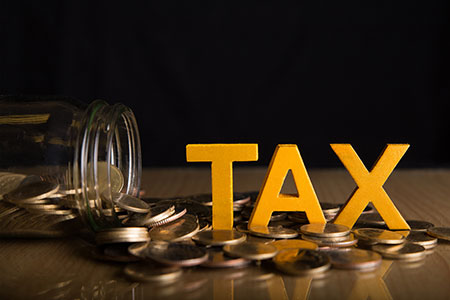
The Australian Taxation Office (ATO) divides dividends into two categories: franked and unfranked dividends. Franked dividends are those that have been taxed at the company level before being paid out to shareholders. This means that shareholders may be eligible for a tax offset when they receive these types of dividends, known as a franking credit. Unfranked dividends, on the other hand, have not been taxed at the company level and are not eligible for a franking credit.
The dividend statement you receive will specify the franking credits attached to the dividend, which may allow you to reduce the tax you pay.
Now, let's consider the benefits of franking credits from a tax perspective.
How to calculate the tax on dividends
Dividends paid to shareholders from profits on which full company tax of 30 per cent (25 per cent for small businesses) carry a tax credit. This is known as an imputation or franking credit and is treated as assessable income. Let’s look at an example.
Let's assume you own 1,000 shares in Commonwealth Bank and the company pays a fully franked dividend of $0.20 per share. You will receive $200 (1,000 x 0.20) in cash payments from the company as well as a franking credit of $85.71 (the tax paid by the company), which you would declare as assessable income in your tax return.
If your tax rate is higher than the company tax rate, you will pay additional tax and if it is lower you will be able to claim back a portion of the company tax that has already been paid.
If your marginal tax rate is 32.5 per cent, you will only pay 2.5 per cent in additional tax on the income you have earned from holding the shares (excluding the Medicare levy and assuming you have no other offsets to reduce your tax). Let’s take a closer look.
| Shareholders Tax Calculation at 32.5% | |
| Taxable Income | $285.71 |
| Tax at 32.5% | $92.86 |
| Less Tax Rebate | $85.71 |
| Tax Payable | $7.15 |
As you can see, you would only pay an additional $7.15 in tax. However, if your tax rate is less than 30 per cent, you will receive a refund.
| Shareholders Tax Calculation at 19% | |
| Taxable Income | $285.71 |
| Tax at 19% | $54.28 |
| Less Tax Rebate | $85.71 |
| Tax Payable | Nil |
| Credit Against Other Income | $31.43 |
In this example, the shareholder has done better than to receive a dividend tax-free because the tax payable on other income is reduced by the tax-free cash bonus of $31.43. This example demonstrates why investors, who operate a self-managed super fund that pays tax at 15 per cent, are more likely to invest in companies that pay fully franked dividends.
Other taxation rules require shareholders to hold shares for a minimum of 45 days to claim the franking credit although this does not apply to investors who receive less than $5,000 in imputation credits a year.
Before I finish up, let's consider how you can maximise your capital and dividend income.
Maximising your capital and dividend income

Maximising your dividend income involves careful selection of the best dividend-paying stocks. However, it's important to note that the amount of dividend you receive is not necessarily related to the performance of the stock. Companies may choose to pay out dividends even when their stock value is declining.
The reason for this is that as the price of a stock falls, its yield rises, which makes it more attractive to investors seeking higher dividends for income. Some would have you believe that a stock with a higher yield is a good buy and an opportunity for investors to achieve good capital gains. However, this is only true if the stock has stopped falling.
If the stock continues to fall, it doesn't make sense to receive a 5 per cent yield if your capital falls 10 to 20 per cent. Remember, you shouldn't invest in dividends alone. This is because the stock must represent good value, first and foremost, in terms of capital gains followed by a good income stream from dividends.
On the whole, companies that have a history of paying good dividends are profitable. Therefore, I recommend identifying companies that pay a good dividend yield and are falling in value, as they may alert you to stocks that will eventually turn and start to rise. The benefit of investing in stocks that are rising is that you will receive both income and capital gain on your investments, which will compound your returns much faster.
If you want to learn how you can maximise your returns in the stock market, purchase my award-winning book 'Accelerate Your Wealth: It's Your Money, Your Choice'. It is packed with simple, yet powerful DIY investment strategies.
Others who read this article also enjoyed reading:

